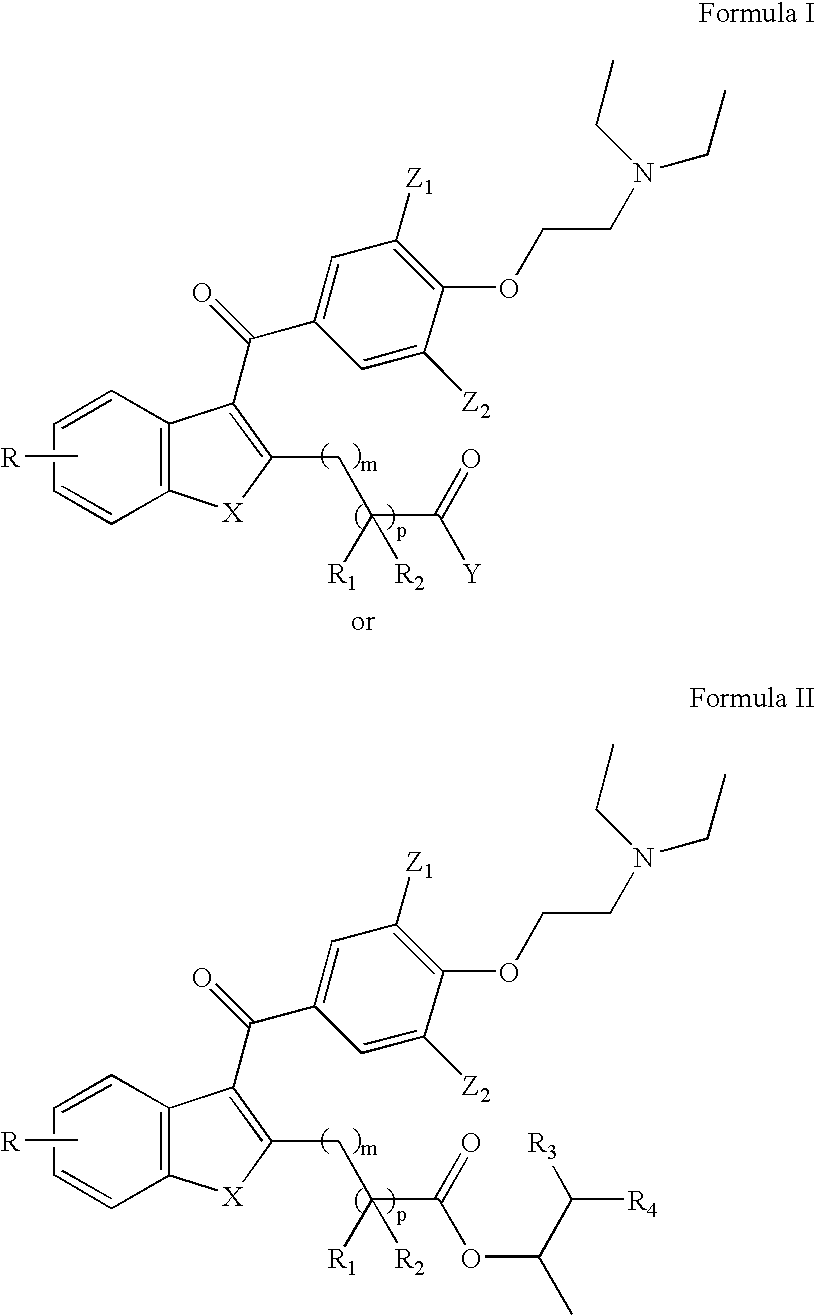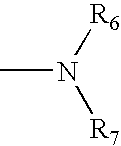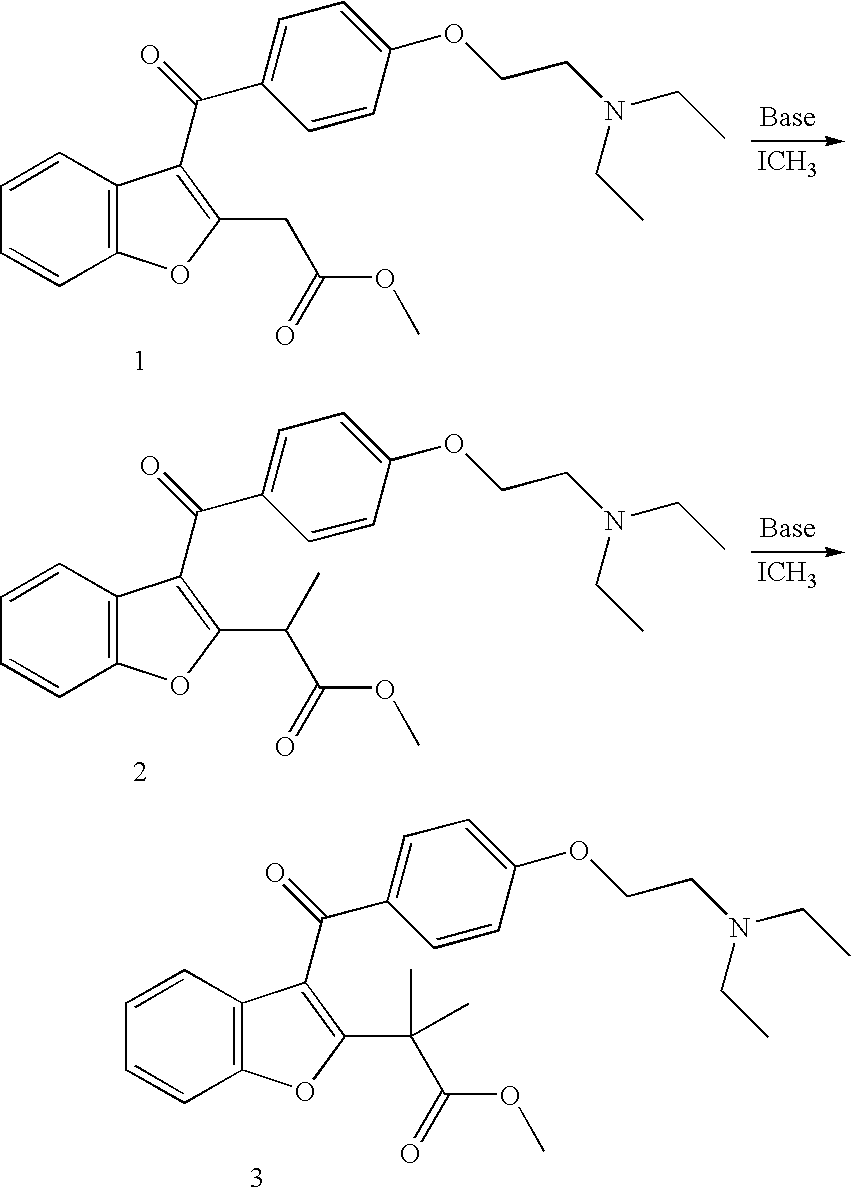Novel compounds for treatment of cardiac arrhythmia, synthesis, and methods of use
a technology for cardiac arrhythmia and compounds, applied in the field of new compounds for treating cardiac arrhythmia, synthesis and methods of use, can solve the problems of poor prognosis, increased risk of sudden death in patients with ventricular arrhythmias and ischemic cardiomyopathy, and poor survival rate, so as to improve the safety profile, the effect of less lipophilic compounds and rapid metabolism
- Summary
- Abstract
- Description
- Claims
- Application Information
AI Technical Summary
Benefits of technology
Problems solved by technology
Method used
Image
Examples
example 1
Synthesis Scheme for an Exemplary Novel Compound
[0059] Compound 1 (7.0 g) (U.S. Pat. No. 5,440,054, P. Druzgala, hereby incorporated by reference in its entirety) is dissolved in methanol (50 ml) at 0° C. containing 0.54 g of sodium methoxide. Methyl iodide (1.42 g) is added and the mixture is stirred at room temperature for 4 hours. The solvent is evaporated and the residue is dissolved in methylene chloride and washed with 2 portions of water (50 ml each portion). The product, compound 2, is purified on silica column with 5% methanol in methylene chloride as eluent.
[0060] Compound 2 (7.2 g) is dissolved in methanol (50 ml) at 0° C. containing 0.54 g of sodium methoxide. Methyl iodide (1.42 g) is added and the mixture is stirred at room temperature for 8 hours. The solvent is evaporated and the residue is dissolved in methylene chloride and washed with 2 portions of water (50 ml each portion). The product, compound 3, is purified on silica column with 5% methanol in methylene chl...
example 2
[0061] A synthetic scheme for the compounds of the subject invention is as follows: Unless otherwise stated, the term “equivalent” mean “a molecular amount of equivalent.”
[0062] Compound 1 (1 equivalent), and methyl succinyl chloride (1.5 equivalents) in methylene chloride, are stirred with pyridine (2 equivalents) at reflux for 3 hours. The solvent is evaporated and anhydrous toluene is added. Add triethylamine (3 equivalents) and stir at reflux for 8 hours. Evaporate solvent and purify on silica, eluting with 5% ethyl acetate in hexane. The yield is about 80% of compound 2 as a white solid.
[0063] Compound 2 is then treated with 2 equivalents of sodium hydride in anhydrous DMF, at 0 C under argon. Then 2 equivalents of methyl iodide are added. After stirring at room temperature for 2 hours, the reaction is worked up as usual to give compound 3.
[0064] Compound 3 is dissolved in anhydrous methylene chloride and p-anisoyl chloride (1 equivalent) is added. Then add tin(IV) chloride a...
PUM
| Property | Measurement | Unit |
|---|---|---|
| enantiomeric excess | aaaaa | aaaaa |
| enantiomeric excess | aaaaa | aaaaa |
| enantiomeric excess | aaaaa | aaaaa |
Abstract
Description
Claims
Application Information
 Login to View More
Login to View More - R&D
- Intellectual Property
- Life Sciences
- Materials
- Tech Scout
- Unparalleled Data Quality
- Higher Quality Content
- 60% Fewer Hallucinations
Browse by: Latest US Patents, China's latest patents, Technical Efficacy Thesaurus, Application Domain, Technology Topic, Popular Technical Reports.
© 2025 PatSnap. All rights reserved.Legal|Privacy policy|Modern Slavery Act Transparency Statement|Sitemap|About US| Contact US: help@patsnap.com



